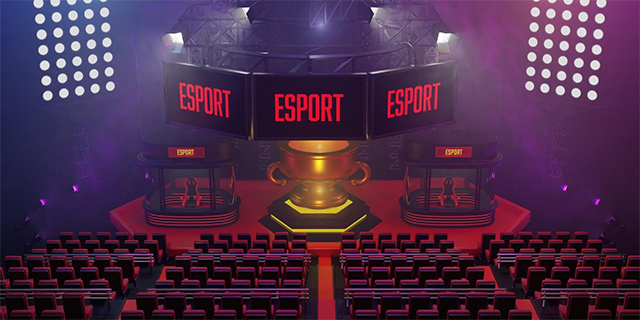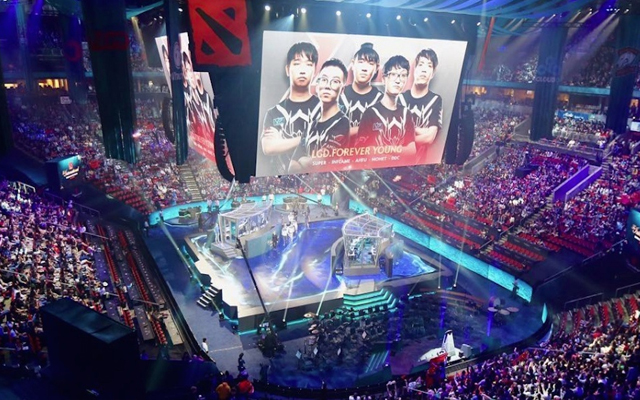
via freepik
Several decades ago, even just ten years ago, the gaming business was very different from what we see now.
Gaming has evolved from a fun hobby to a self-contained entertainment universe. It all started with arcades and went on with home video games before it reached the massive industry it is now. Video games have grown to be the most widely used form of entertainment in the world. One main factor contributing to their popularity though – their competitive character, which has given rise to eSports, or professional gaming.
Without further ado, let us get started and study the development of eSports by going back in time.
The eSports’ Earliest Years
Esports events initially appeared in the late 1970s. It was a Stanford University event where students from various academic fields competed in a game of the classic Spacewar!. But there was no reward money, unlike now. The reward of a year’s subscription to the renowned “Rolling Stone” magazine was revealed at this groundbreaking event.
Although this did not represent a registered eSports event, it marked undoubtedly the beginning of a novel trend in the gaming industry. The impetus this event generated helped organize the first legitimate competition in video games in 1980. More than 10,000 participants took part in the Space Invaders Championship tournament. The intense attention made people aware of the global phenomenon of competitive gaming.
Slowly but surely, media outlets, game developers, and several other organizations began to recognize the potential that competitive gaming had and began to take action. During the same year, Twin Galaxies hosted yet another significant competitive gaming event. It was developed by the Walter Day businessman, who also maintained track of the highest scores obtained globally. At Twin Galaxies, players from across the world competed to outscore one another and claim the top-five scoring spot.
People loved video games to insanity. They eventually found their way into TV broadcasts, although slowly. Numerous live performances featured mini-competitions where players competed for the greatest scores. The cash prizes or gift baskets were on the table for them. And many people watched these events while enjoying their afternoons all across the world, but mainly in the US.
The Ongoing Advancement of eSports Development
Nintendo began to dominate eSports in the latter part of the 1980s as it advanced game control, visuals, and accessibility to new heights. Midway through the 1980s, the original NES (Nintendo Entertainment System) rendered its imprint on North America. This was swiftly followed by the Super NES’s 1991 launch. Super Mario and Street Fighter II: The World Warrior, the most popular video game of the 1990s, arrived with the Super Nintendo.
Among the first businesses to capitalize on the possibilities of eSports was Nintendo, which introduced its global champions fleet in the 1990s. Additionally, it has been a success for designers and developers to make video games considerably more approachable than they were in the preceding ten years. Nintendo hosted the following World Championship in 1994. A great crowd saw the event’s grand finale in San Diego, California, and it was a huge success.
The route to the eSports competitions we see today was paved by these events. Due to the lack of social media and well-established regular gaming competitions in the late 1990s, it was rather challenging for gamers to interact with one another. And eSports ultimately advanced to a new level with the growth of the World Wide Web and PC gaming.
Bringing eSports to a Whole New Level With Counter-Strike
When it concerns eSports, FPSs (first-person shooters) constitute some of the most prominent genres. And the first game that comes to mind when we discuss first-person shooters is Counter-Strike.
Counter-Strike was essentially a Half-Life update, but it quickly became the FPS game of choice among players. Counter-Strike’s first official version was launched in 1999. It quickly rose to the top of the list of multiplayer competitive games, and now, gamers from all around the world participate in it.
In 2001, the game had its eSports debut with a USD$150,000 prize pool. Many reputable gaming organizations, like Ninjas in Pyjamas (NiP) or SK Gaming, assembled a group of professional gamers. At the competition, NiP achieved the first-ever CS: GO triumph (Counter-Strike: Global Offensive – the fourth game in the main Counter-Strike series), which went on to influence the development of the lucrative FPS eSports market we know today.
The Twitch Era

Even though eSports entered broadcasting on television in the late 1990s, due to rights disputes and various watching options on a global scale, the world was never allowed to participate in the competitive gaming sector. With the Twitch stream’s ascent, this altered.
Twitch was designed to be the leading streaming service for gaming and esports, and it still serves that purpose well today. The platform made it easier for the general public to witness competitive gaming up close. The platform has elevated eSports to a level that was previously unthinkable. Online broadcasts of well-known games like CS: GO, LoL (League of Legends), and Dota rapidly became accessible to everyone. Instead of relying solely on luck to pursue a career in gaming, players now have the opportunity to make a fortune playing their favorite games from home.
A Closure of Our Brief History of eSports
Esports is continually growing and shows no signs of slowing down. Every day, the industry is expanding dramatically.
Esports is now completely accepted by traditional teams, and they are receiving millions of dollars in sponsorship for major tournaments. According to Newzoo, the CAGR (Compound Annual Growth Rate) for eSports fans would be about 8.0% from 2020 to 2025. They anticipate that there will be 322.7 million occasional watchers. Additionally, there are expected to be 318.1 million eSports fans, bringing the audience total to 640.8 million.
By the end of 2023, the eSports industry is anticipated to generate US$4 billion in revenue, Statista predicts. Market volume is predicted to reach US$5.4 billion by 2027, with revenue forecast to rise at an average yearly rate of 8.21% (CAGR 2023–2027).
We must insert betting on eSports, which includes wagering on a few of the best betting sites with eSports events on offer found at Bookmaker-expert.com/country/canada/, into the equation: In 2023, the eSports betting industry is anticipated to generate US$2.3 billion in revenue. By 2027, it is anticipated that revenue will rise at an average annual rate of 8.05% (CAGR 2023–2027), with a market size of US$3.2 billion. The majority of revenue is produced in the United States, which is expected to have a market volume of US$759.4m in 2023. This data also comes from Statista.
The future of the sector is promising, especially given the obvious current upward trend that eSports is riding.

Comments are closed.